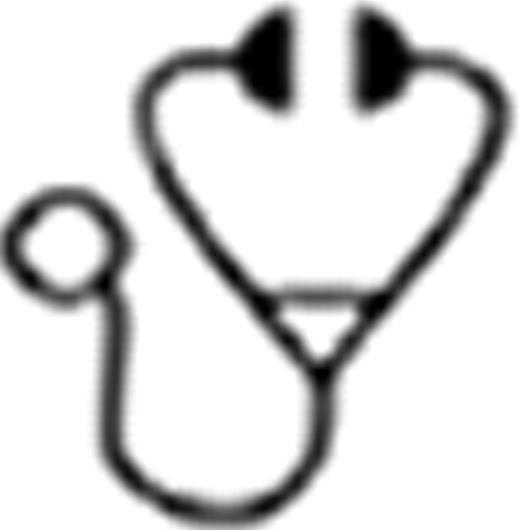Abstract
Abstract  3237
3237
Sickle cell disease (SCD) is characteristically described as a disease of hemolytic anemia and vaso-occlusive crises (VOC). However, patients suffer from a multitude of other problems including impaired growth and development, chronic pain, increased susceptibility to infection, poor bone health, and impaired cell-mediated immunity. Nutritional deficiency has been implicated as a contributor to these issues. The objective of this study was to provide a comprehensive overview of the nutrition status of pediatric SCD patients, and test for previously studied associations between nutrients and markers of disease severity and growth.
Retrospective cross-sectional pilot study at a Canadian pediatric tertiary care centre from March to June 2012. Patients with all SCD genotypes who were between 2–18 years were eligible. As part of a routine follow-up clinic visit, patients were tested for serum levels of vitamin D (calcidiol and calcitriol), zinc, B6, B12, folate, and homocysteine. Note that all patients were prescribed folic acid supplementation. Information regarding laboratory values, growth, and markers of disease severity was obtained via medical record abstraction. Disease severity was categorized as mild (healthy patients with no hospital visits in past 12 months), moderate (emergency department (ED) visits related to SCD in past 12 months, home narcotic usage, and/or hydroxyurea usage) or severe (hospitalizations related to SCD in past 12 months, transfusion requirement, and/or end-organ damage (e.g. retinopathy)). Total nutrient deficiencies were categorized into none, single, or multiple.
Preliminary analysis of 43 patients was conducted (11.2 + 4.1 yrs, 40% female). Half the sample (50%) had multiple nutrient deficiencies, and 31% had a single deficiency. Deficiencies were seen most frequently in calcidiol (25(OH)D) (49% with insufficiency) and zinc (64% with deficiency), although there was no association between them (r=0.1, p=0.4). See Table 1 for an overview of nutrition status of all patients. Of all the markers of growth and disease severity tested, VOC was significantly associated with both vitamin D (calcidiol) deficiency and zinc deficiency. More specifically, calcidiol deficiency was moderately and significantly associated with total number of pain episodes (hospital, ED, and home) over the past 12 months (r=−0.4, p=0.02). Zinc deficiency was moderately and significantly associated with number of pain episodes managed at home over the past 12 months (r=−0.34, p=0.04).
Other variables showed no significant findings. There were no gender differences in number of deficiencies (p=0.2). In terms of growth, patients had normal mean height-for-age (45.6 + 29.1 percentile) and weight-for-age (47.8 + 25.7 percentile). There was no association between disease severity and height-for-age (r=−0.2, p=0.2), weight-for-age (r=−0.1, p=0.6), or number of deficiencies (r=0.2, p=0.4). Calcidiol deficiency was not associated with height-for-age (r=0.6, p=0.7). Zinc deficiency was not associated with height-for-age (r=0.05, p=0.8), or with number of hospitalizations for VOC (r=−0.26, p=0.1) or infection (r=−0.1, p=0.6) in the past 12 months.
This is the first study to provide a more complete overview of nutrition status in children with SCD. The majority of patients had multiple nutrient deficiencies, primarily in vitamin D (calcidiol) and zinc. Calcidiol deficiency was associated with increased VOC. Finally, this study contributes to growing evidence for the link between zinc's anti-sickling properties and reduced VOC, although we only found a significant association for home pain crises; this may be due to the low overall rate of hospitalizations in our sample. Prospective studies with larger samples are needed to further elucidate the relationship between nutrient deficiencies and SCD, and to determine whether nutrient supplementation can improve the disease course.
Nutrition Status of Children with SCD
| Range . | Nutrient . | ||||||
|---|---|---|---|---|---|---|---|
| Vitamin D (25(OH)D) . | Vitamin D (1,25(OH)D) . | Zinc . | B6 . | B12 . | Folate . | Homo-cysteine . | |
| Very low | 27% (11) | 0% | 46% (18) | 3% (1) | 0% | 0% | – |
| Low | 22% (9) | 0% | 18% (7) | 14% (5) | 5% (2) | 0% | – |
| Normal | 49% (20) | 97% (28) | 36% (14) | 81% (29) | 93% (40) | 100% (43) | 98% (40) |
| Above normal | 2% (1) | 3% (1) | 0% | 3% (1) | 2% (1) | – | 2% (1) |
| Range . | Nutrient . | ||||||
|---|---|---|---|---|---|---|---|
| Vitamin D (25(OH)D) . | Vitamin D (1,25(OH)D) . | Zinc . | B6 . | B12 . | Folate . | Homo-cysteine . | |
| Very low | 27% (11) | 0% | 46% (18) | 3% (1) | 0% | 0% | – |
| Low | 22% (9) | 0% | 18% (7) | 14% (5) | 5% (2) | 0% | – |
| Normal | 49% (20) | 97% (28) | 36% (14) | 81% (29) | 93% (40) | 100% (43) | 98% (40) |
| Above normal | 2% (1) | 3% (1) | 0% | 3% (1) | 2% (1) | – | 2% (1) |
No relevant conflicts of interest to declare.
Author notes
Asterisk with author names denotes non-ASH members.

This icon denotes a clinically relevant abstract

